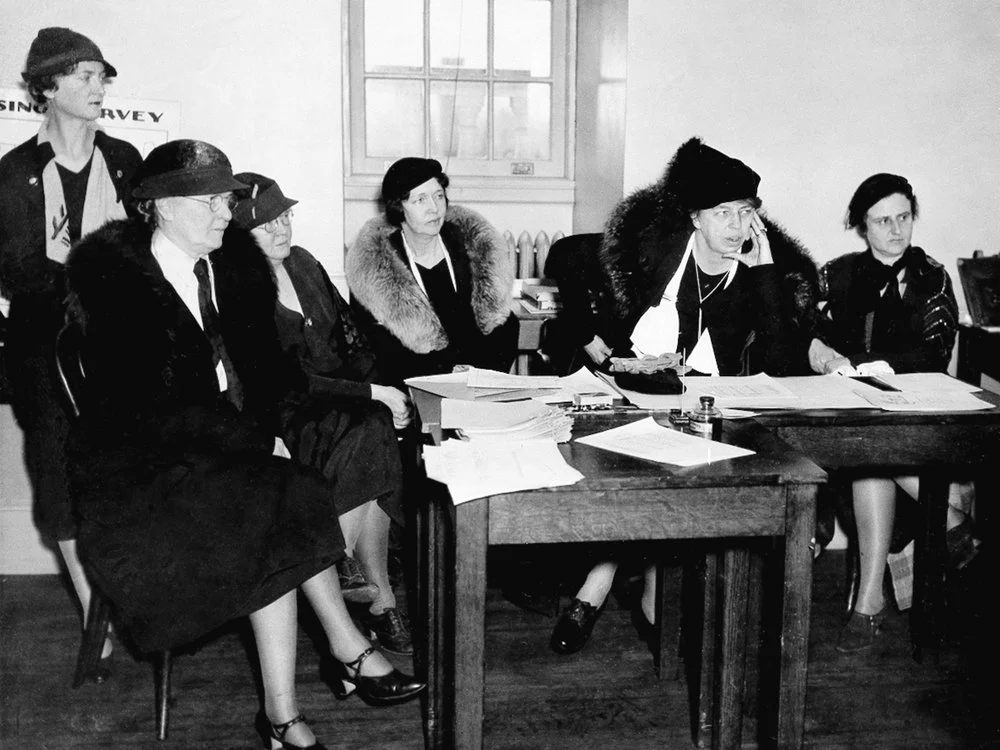Eleanor Roosevelt, the wife of Franklin D. Roosevelt, the president of the United States from 1933 to 1945, was a leader in her own right and was involved in numerous humanitarian causes throughout her life. But did you know how the former first lady held her press conferences?
Eleanor Roosevelt held press conferences at which only female journalists were permitted. This ensured they kept their jobs during the Great Depression, earning a steady income and maintaining their professional status.
The Early Years of Eleonor Roosevelt
Anna Eleanor Roosevelt was born in New York City on October 11, 1884. Her father, Elliott Roosevelt, was Theodore Roosevelt’s younger brother, and her mother, Anna Hall, came from a wealthy New York family.
Her father was an alcoholic, and her parent’s marriage was strained. Roosevelt and her two younger brothers, Elliott Roosevelt Jr., and Gracie Hall Roosevelt, lived with their grandmother, Mary Ludlow Hall, in Manhattan and Tivoli, New York, after their mother died of diphtheria in 1892, her father died less than two years later.
Roosevelt, an awkward, serious child, was educated privately until age 15 when she was sent to Allenwood Academy, a girls’ school in England. She excelled under the tutelage of the school’s headmistress, Marie Souvestre, who encouraged young women to take on social responsibility and independence.
At the age of 18, Roosevelt returned to New York City and made her social debut at the Waldorf-Astoria Hotel. She then got involved in social reform work, volunteering as a teacher for impoverished immigrant children at Manhattan’s Rivington Street Settlement House and joining the National Consumers’ League, whose mission was to end unsafe working conditions and labor practices in factories other businesses. (Source: History)
The Roosevelt Marriage
The Roosevelts had a notable political partnership and a complicated personal relationship in American history. Eleanor discovered her husband was having an affair with her social secretary, Lucy Mercer, early in their marriage, in 1918. Eleanor offered Franklin a divorce, but he refused for various reasons, including the fact that divorce carried a social stigma and would have harmed his political career.
Experts believe Roosevelt’s infidelity prompted Eleanor to become more independent and devote herself to political and social causes. Despite Franklin Roosevelt’s promise not to see Mercer again, the two maintained contact, and she was with him in Warm Springs, Georgia, when he died of a cerebral hemorrhage on April 12, 1945, at 63. Roosevelt had been elected to an unprecedented fourth term as president the previous November. (Source: History)
Eleonor Roosevelt After the White House
Eleanor Roosevelt returned to New York after the president’s death, dividing her time between her Val-Kill cottage, a former furniture factory converted into a home in Hyde Park, and an apartment in Manhattan. She was expected to run for public office but chose to remain an active private citizen.
Eleanor Roosevelt died on November 7, 1962, in New York City at age 78, from aplastic anemia, tuberculosis, and heart failure. President John F. Kennedy, former Presidents Harry Truman, and Dwight D. Eisenhower attended her funeral. She was buried on the grounds of the Roosevelt estate in Hyde Park, next to her husband. (Source: History)
Image from SmithsonianMag
